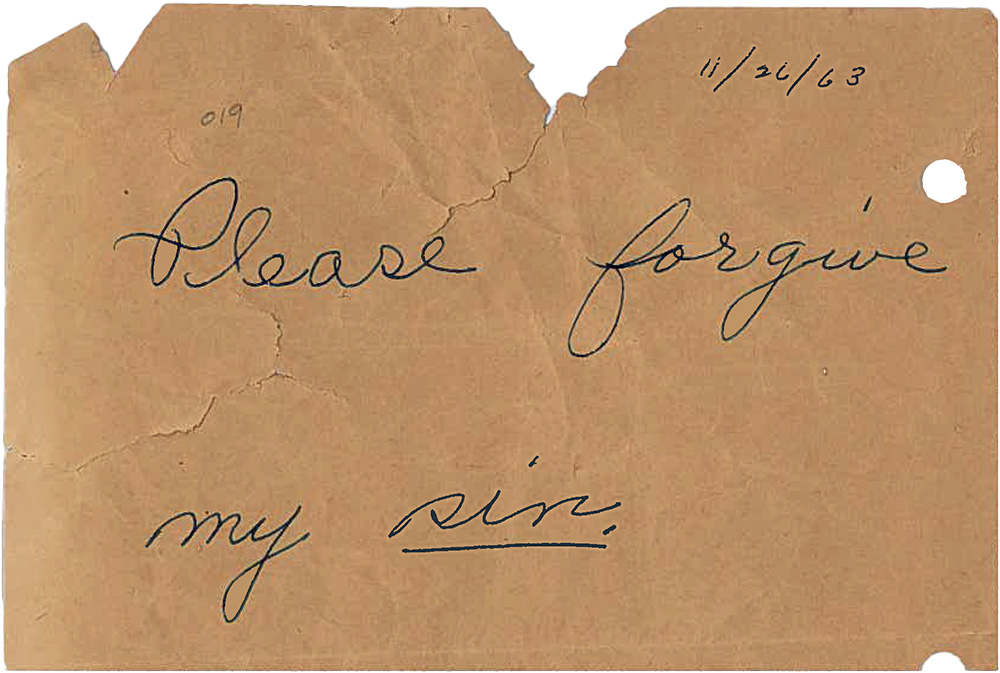Bad Luck, Hot Rocks, a vast project by artists Ryan Thompson and Phil Orr, features photographs of specimens from the “conscience pile” at Arizona’s Petrified Forest National Park, and facsimiles of “conscience letters” from the Petrified Forest National Park archives. The specimens are petrified wood, fossils of trees that fell 200 million years ago. The letters are written by visitors to the park who took the rocks, then returned them by mail, incidents of bad luck leading them to believe the stolen rocks were responsible.
I find this project so visually appealing, entertaining (I could read the letters for hours), and utterly human. It’s clear there’s an element of the project that speaks to human beings wanting to connect to nature, to feel close to it, and to even own it in a way, but I love this other layer of something sort of supernatural. It’s beyond guilt; over the past 80 years, more than 1,200 people who have stolen rocks have returned them with letters not only admitting their crime, but expressing their superstition, and hoping to absolve themselves of the bad luck they are convinced is caused by their indiscretion.
From Thompson’s statement: Located in the Painted Desert of Northeast Arizona, the Petrified Forest was established, in part, to protect a vast deposit of petrified wood dating back to the Late Triassic period—roughly 200 million years ago. According to park administration, the preservation efforts have been an overwhelming success. In the more than one hundred years since its establishment in 1906, however, some visitors have still been unable to resist the urge to remove wood from the park. Some of these same visitors eventually return their ill gotten souvenirs by mail, accompanied by ‘conscience letters.’ The content of each letter varies, but writers often include stories of misfortune, attributed directly to their stolen petrified wood. Car troubles. Cats with cancer. Deaths of family members. For many, their hope is that by returning these rocks, good fortune will return to their lives. Other common themes include expressions of remorse, requests for forgiveness, and warnings to future visitors.
The publication of [the book] “Bad Luck, Hot Rocks” coincides with an increasing attentiveness to larger geologic forces in our everyday lives. With many scientists suggesting the formal adaptation of an ‘Anthropocene’ epoch, we seem more aware than ever of the effects [of] our personal and collective actions on the natural world.
From “Bad Luck, Hot Rocks”
Visit artist's site: badluckhotrocks.com
Posted March 9th, 2016














